In this Article
Toggle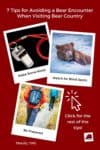
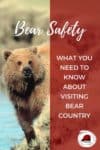
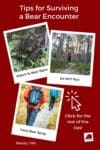
While it’s exciting to see a black bear or grizzly bear in the wild, it’s important to be bear aware in bear country. Improperly interacting with bears can cause injury or death, either to you or the bear. Here’s how to be bear aware in order to avoid (and survive) a bear encounter.
There’s nothing quite as amazing as Montana in the early summer. The melting snow fills babbling brooks and running rivers with crystal clear water. Lush, green meadows of tall grass and native wildflowers attract antelope, elk, and bison. And the bears are done hibernating.
While I want nothing more than to capture these beautiful creatures in their natural habitat, I also don’t want to be a bear’s dinner. After more than a decade of summer trips to Montana, here are tips and tricks to help you avoid a bear encounter by being be bear aware in bear country.
Sage Advice: Here’s a fun fact about Montana — the Treasure State is home to the largest grizzly bear population in the lower 48 states.
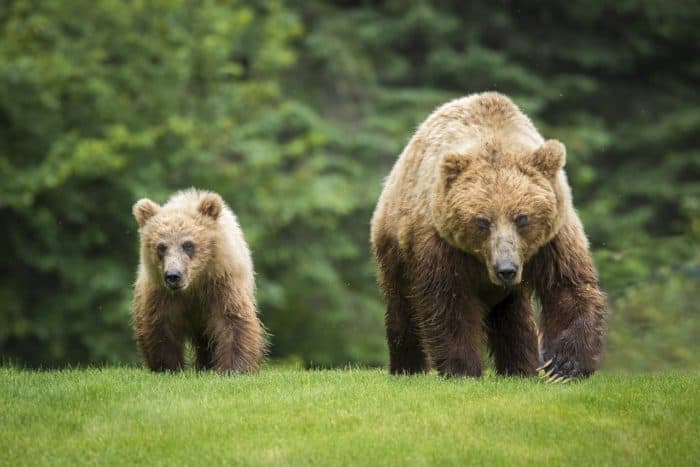
To help offset the costs of running EverydayWanderer.com, you’ll find affiliate links lightly sprinkled throughout the site. If you choose to make a purchase via one of these links, there’s no additional cost to you, but I’ll earn a teeny tiny commission. You can read all of the legal blah blah blah (as my little niece says) on the full disclosure page.
Avoiding a Bear Encounter by Being Bear Aware
How do you survive a bear encounter? The best way to survive a bear encounter is to avoid having one at all. Here are the best ways to ensure bears know you are in the area so that they avoid you completely.
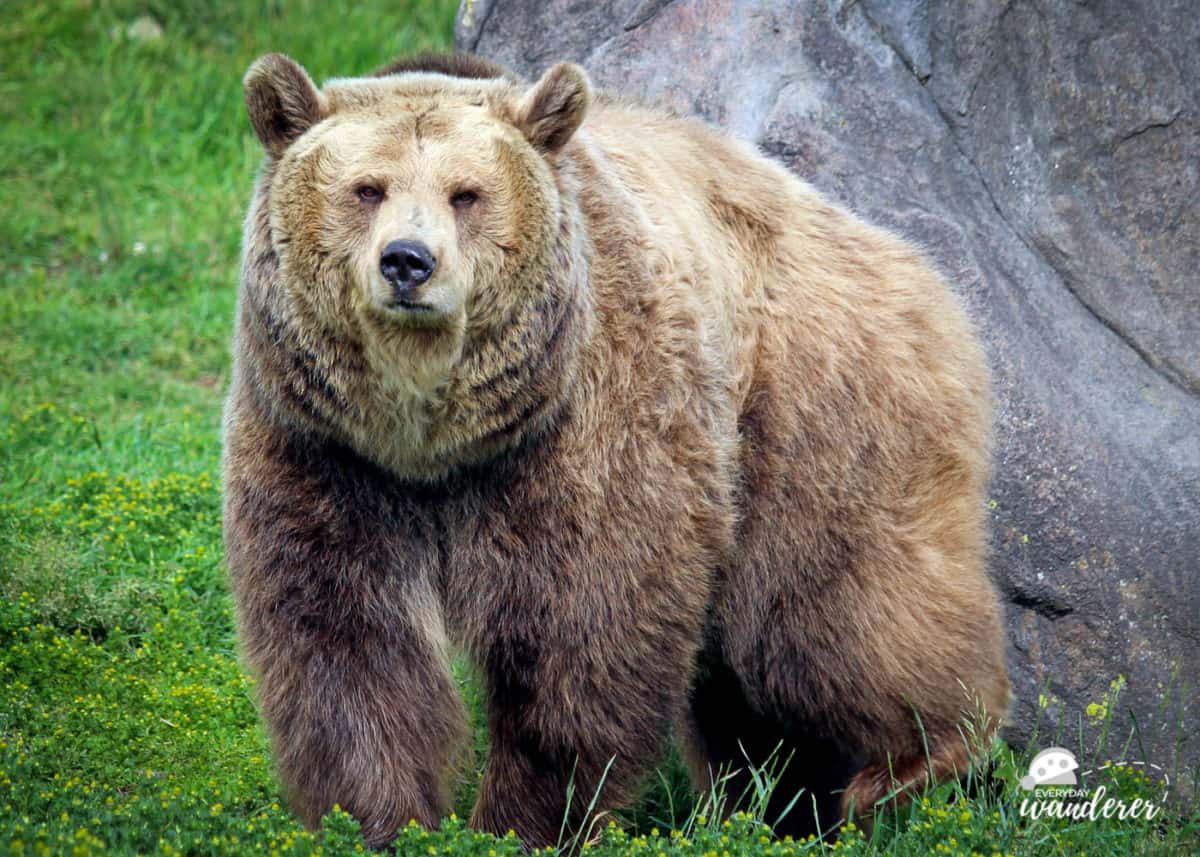
Make Some Noise in Order to Avoid a Bear Encounter
Bears will generally avoid humans, so avoid a bear encounter by making noise as you camp, hike, fish, bike, or otherwise enjoy the great outdoors in bear country. It’s always a good idea to enjoy these activities with a buddy or in a small group. And as you do, talk as you walk, sing as you stroll, and whistle while you wash campfire cookout dishes so that the bears know you’re there and can head in the other direction.
If you’re hiking alone, or have simply run out of things to talk about, wear a bear bell around your belt or attach it to your backpack. Similar to a sleigh bell, the cluster of jingles will help you be bear aware by alerting black bears or grizzly bears to your presence.
Another way to be bear aware is to avoid hiking at dawn, dusk, or night since black bears and grizzly bears are the most active at those times. During huckleberry season, typically in late summer, bears are especially busy foraging for their favorite mountain state fruit at dawn and dusk, so keep an eye out if you plan to pick huckleberries.
Enjoying This Article?
Sign up for the newsletter!
Thank You for Subscribing!
Bears Poop in the Woods (and Other Signs of Bear Activity)
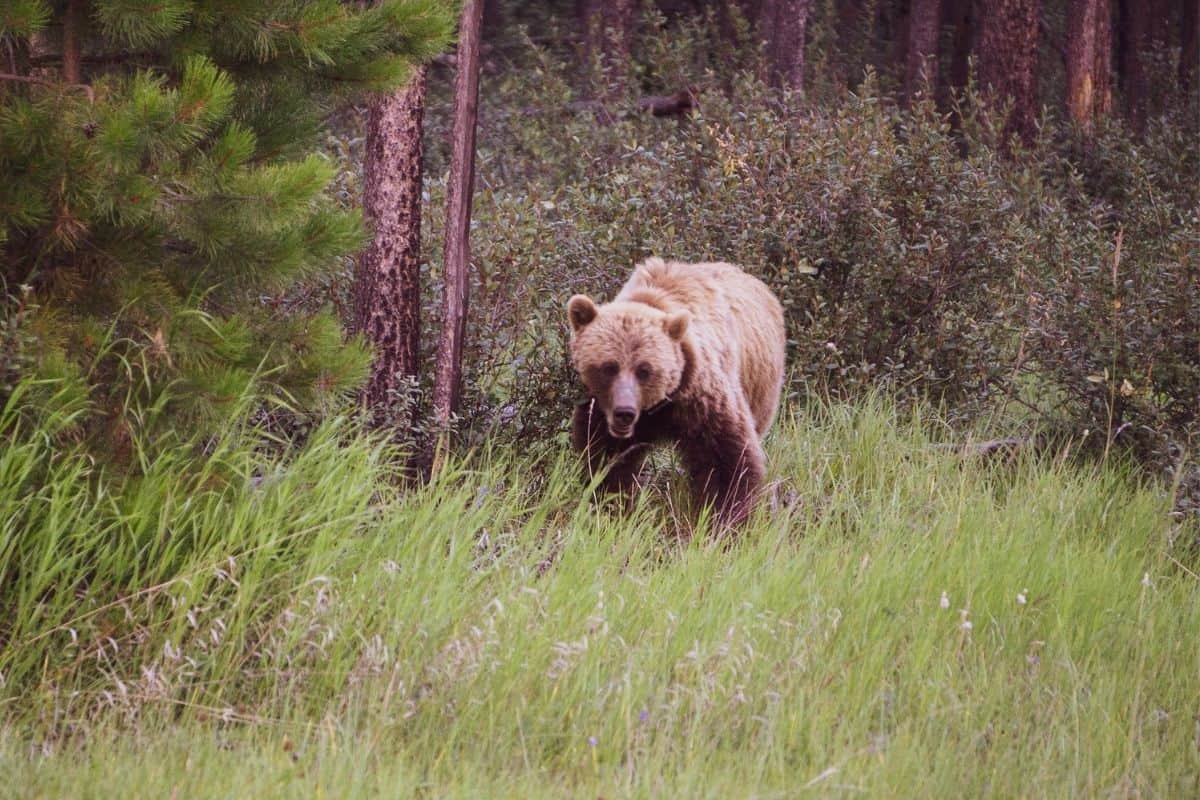
Be bear aware by watching for signs that bears are in the area. These clues include:
- fresh bear scat,
- bear tracks,
- fresh scratches on trees,
- smashed logs, and
- overturned boulders.
Although bears are omnivores, they actually eat more plants than animals. In fact, because they are at the top of their food chain, they rarely have to hunt. Instead, the lazy bums steal meat from other animals. Therefore, you should avoid any animal carcasses that you encounter while experiencing the great outdoors. Bears will fiercely protect this often stolen food source and could be hiding nearby even if you don’t see them. If you see any signs of bear activity — or bear bait like a carcass — be bear aware by amping up your volume and steering clear of Bambi’s bones.
Sage Advice: Support your National Parks by purchasing a Passport to Your National Parks. And if you have a habit of forgetting your park passport (like I do), purchase a pack of these stickers and keep them in your purse!
Tune In to Avoid a Bear Encounter
To your surroundings, not your headphones. Instead, you should be unplugged and focused on the sights and sounds around you in order to be bear aware and avoid a bear encounter.
Related Article: 5 Reasons Why You Should Visit the Grizzly and Wolf Discovery Center (Near Yellowstone National Park)

Don’t Feed the Bear
From Winnie the Pooh to Yogi Bear, you’ve been taught not to feed bears. But what you may not know is how important it is to properly store food and leave no scraps behind. Because bears can smell an animal carcass from 20 miles away, you shouldn’t leave food unattended, not even for a few minutes. Every bite of food brought into bear country should be properly stowed at all times. This means in your vehicle, in bear-proof lockers, or hanging from a pole.
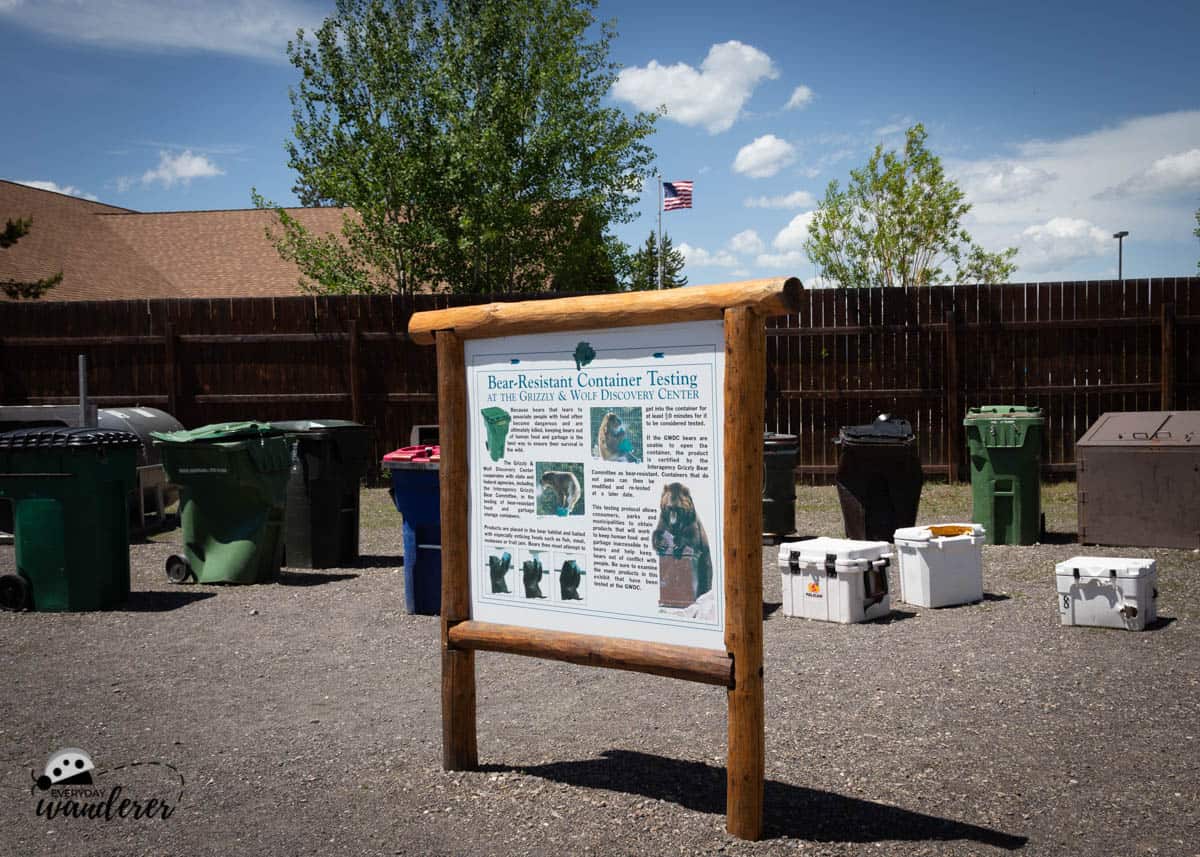
In addition to securing food and condiments, be bear aware by also securing:
- Water, soda, beer, and other beverage containers
- Pots, pans, cooking utensils, plates, napkins, and silverware
- Stoves and grills
- Coolers and ice chests
- All garbage, including any food scraps or food on the ground
- Cosmetics and toiletries
- Pet food, containers, and bowls
Sage Advice: If you love grizzly bears, check out the mugs, note pads, pajamas, socks, and other bear items and apparel offered by LazyOne.
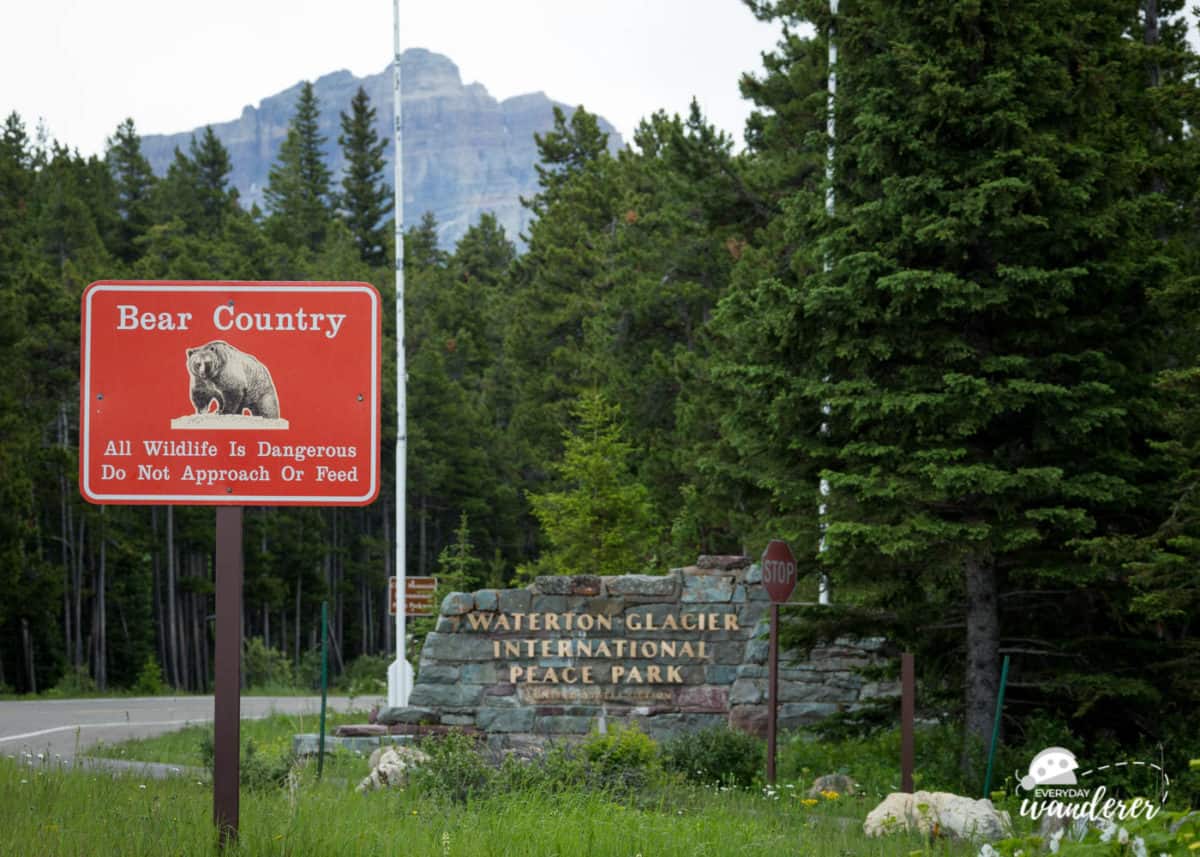
Heed the Warning Signs to Avoid a Bear Encounter
Park rangers don’t put up bear closure signs for fun. Or as jokes. Rather, they close off areas from time to time due to bear activity so that humans and bears can co-exist in our rapidly shrinking world. So if you approach an area that is closed due to bear activity, don’t be a dumbass.
Related Article: Visit Yellowstone National Park without Making Headlines
Fun Fact: Montana has the largest grizzly bear population in the contiguous United States. Here are some other fun facts about Montana.

Be Extra Bear Aware in Bear Blind Spots
In areas where bears may not be able to easily see, hear, or smell you, be bear aware times ten. Bears may have a harder time knowing you’re in the area when traveling on switchbacks, fishing, hiking near water, and when you are downwind from them.
Be Like a Boy Scout
Just like the Boy Scout motto, be prepared, you can be bear aware by planning ahead. One of the best precautions is to have bear spray with you at all times in bear country. And, you should know how to properly use it.
Bear spray is a type of pepper spray in an aerosol can that can be used to stop an aggressive or charging bear. If a bear comes at you, start spraying once he has reached a distance of 60 feet or less. While bear spray has proven to be effective in stopping bear attacks and preventing human injuries 98% of the time, it also doesn’t permanently harm the bear.
But for bear spray to be effective, it needs to be at the ready. If you need to use bear spray, chances are you won’t have time to dig it out of the bottom of your backpack, so keep it handy in a holster at your waist.
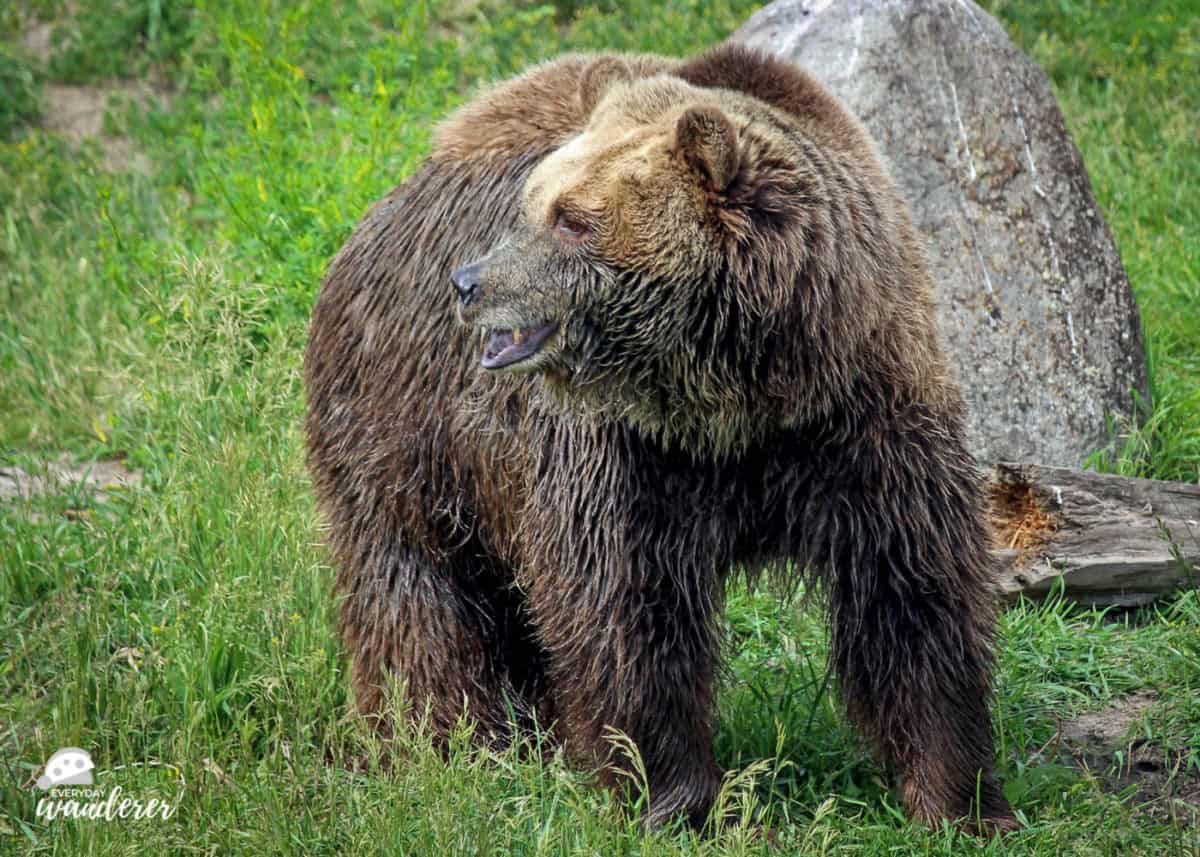
As you might imagine, bear spray should be stored and used according to manufacturer directions. One important reminder is that bear spray should not be stored in a hot vehicle where it might explode. It is also important to keep the safety lock on at all times unless you are actively using the spray to stop an advancing bear.
Sage Advice: Bear spray is expensive (approximately $40-$50 per container) and isn’t allowed on airplanes, not even in your checked luggage. So if you are flying into bear country, consider renting bear spray from a reputable, local venue.
How to Survive a Bear Encounter
While bear encounters are rare, especially if you follow the tips above to avoid them, this is what you should do if you experience a close encounter with a bear.
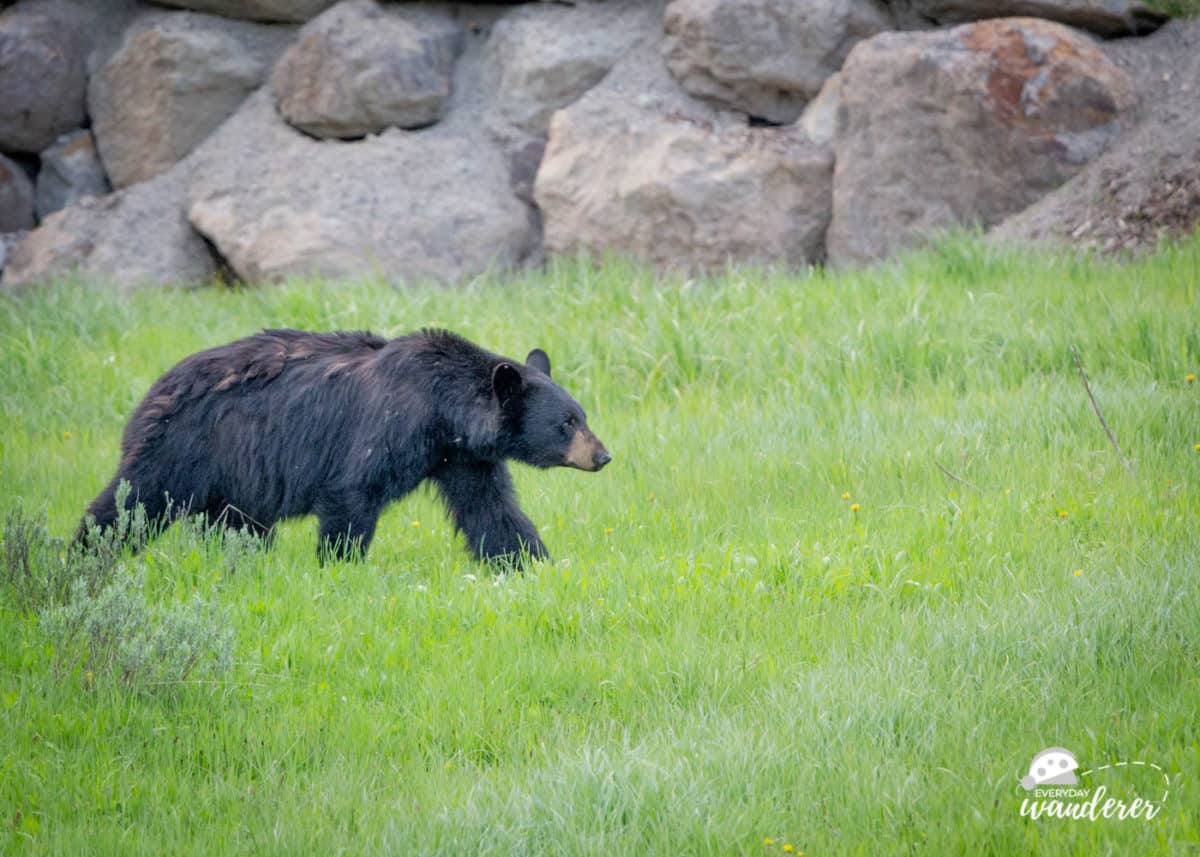
Keep Calm
Yes, I know this is easy to type at a laptop in my bear-free home far away from bear country.
I understand that it’s much harder to keep calm when you’re staring a grizzly bear in the face, but try. There is a good chance you’ll see the bear before he sees you, especially if he’s busy foraging for food.
If the bear doesn’t see you, do your best to remain out of sight and detour downwind away from the bear. As you do, jingle your bear bells, chat with others in your party, or start singing a song as if you’re auditioning to perform on Broadway.
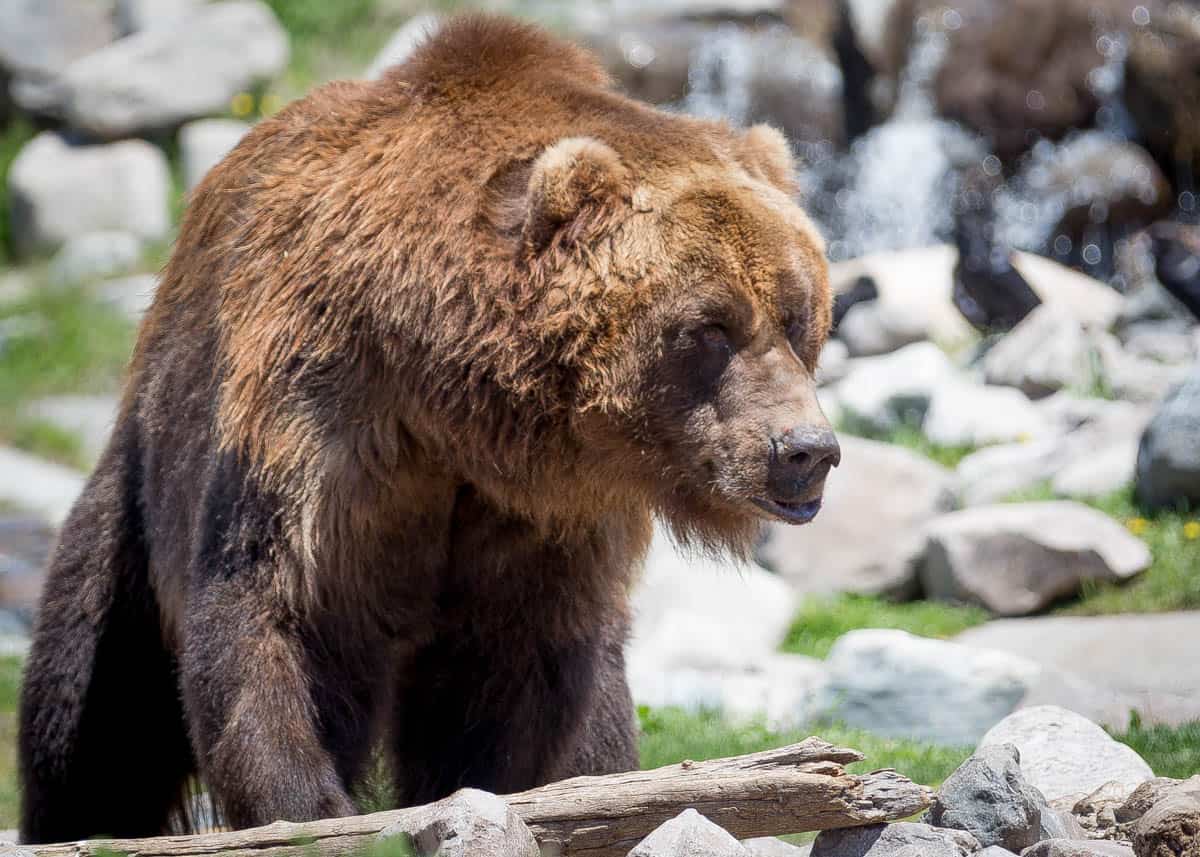
If the bear does see you, speak to him in a calm, firm voice without making eye contact. This helps the bear identify you as human. Provided the bear hasn’t grown comfortable around humans, this should be enough for him to leave the area. Slowly back away while facing the bear. Pull your bear spray from its holster, remove the safety tab, and be prepared to use the bear spray if the bear charges at you.
Whatever You Do, Do NOT Run
One of the absolute worst things you can do is turn and run from a bear. Not only might this encourage the bear to chase after you, but you will lose the race. If you think you can outrun a bear, then you should compete in the next Olympics. While Usain Bolt can sprint 27 miles per hour, a bear can run up to 35 miles per hour. So, I assure you, you will not win a race against a bear.
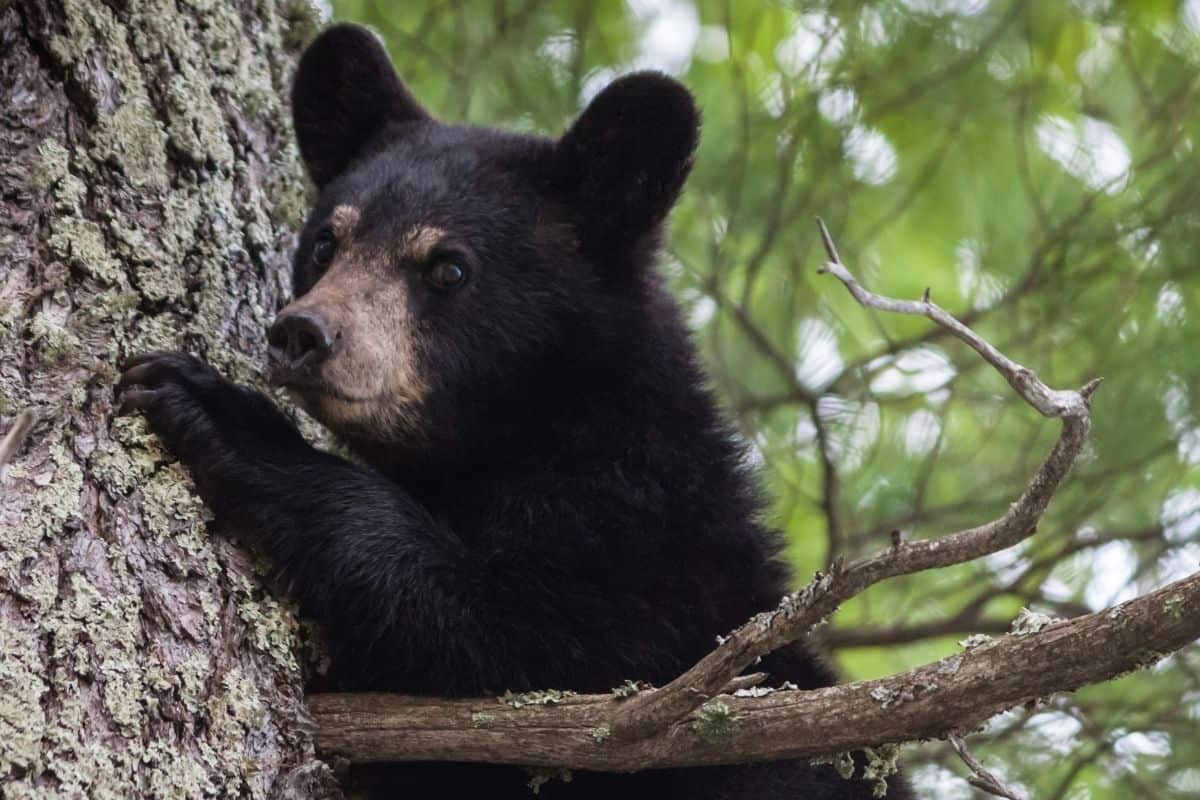
And Please Don't Be This Guy
The last thing you should do if you encounter a bear is turn your back and snap a selfie. Unless you’d like to be a Darwin Award recipient…
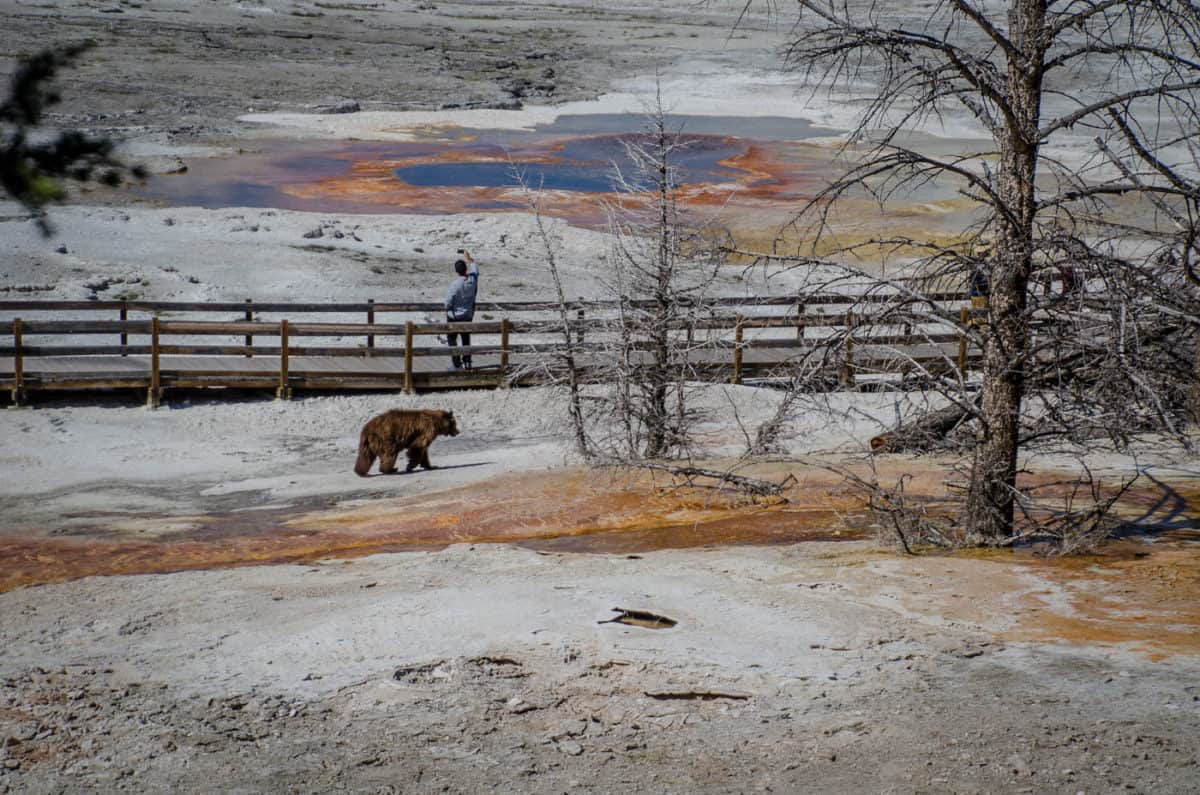
Have Bear Spray Ready and Know How to Use It
View this post on InstagramA post shared by Everyday Wanderer (@shutterbugsage) on
Whether you rent or buy your bear spray, don’t set out camping, fishing, or hiking in bear country without fully understanding how to use it.
In Case of a Bear Attack, Lie Flat on Your Stomach
If the bear continues to approach after you’ve:
- Spoken firmly,
- Tried to slowly back away, and
- Dispensed bear spray
Be prepared to drop to the ground and “play dead” right as the bear reaches you, and not a second before. Lie face down, keeping your backpack on to protect your backside, and remain as still as possible until the bear determines you are no threat and leaves the area.
If you’ve ever tried to get out the door to work with four kids in tow, you know that it can take a while for a momma bear to gather up her cubs and move on. Be extra sure that the bear has left the area before you get up, because if you get up too quickly, the bear may attack a second time.

As terrifying as this situation may sound, it is critical that you are still and don’t fight back. The National Park Service reports that people who play dead when attacked by a bear in a surprise encounter receive only minor injuries 75% of the time. But when people have instead chosen to fight back during a bear encounter, they sustained very severe injuries 80% of the time.
Have You Encountered Bears in the Wild?
What was it like encountering a bear? Do you have another tip to share to help others be bear aware? Share your experiences in the comments section below.
Ready to Go?
Use These Helpful Links to Book Your Trip!
- Find low fares with airfarewatchdog and Skyscanner
- Book your plane ticket with Expedia or Kayak
- Or take the scenic route on an epic road trip in a rental car or an RV from Outdoorsy
- From hotels to private homes, find the perfect accommodation with Hotels.com or Vrbo
- Travel in style with a suitcase, carry-on, backpack, or handbag from eBags
- Save on tickets to attractions, sightseeing tours, and more with CityPASS, Tiqets, and Viator
- Don’t leave home without travel insurance from AXA
- Discover the sights, history, and culture of your destination with an interactive scavenger hunt
- Need something else to plan your perfect trip? Visit my travel resources page for more trusted partners. Happy wandering!
Thank you for sharing!

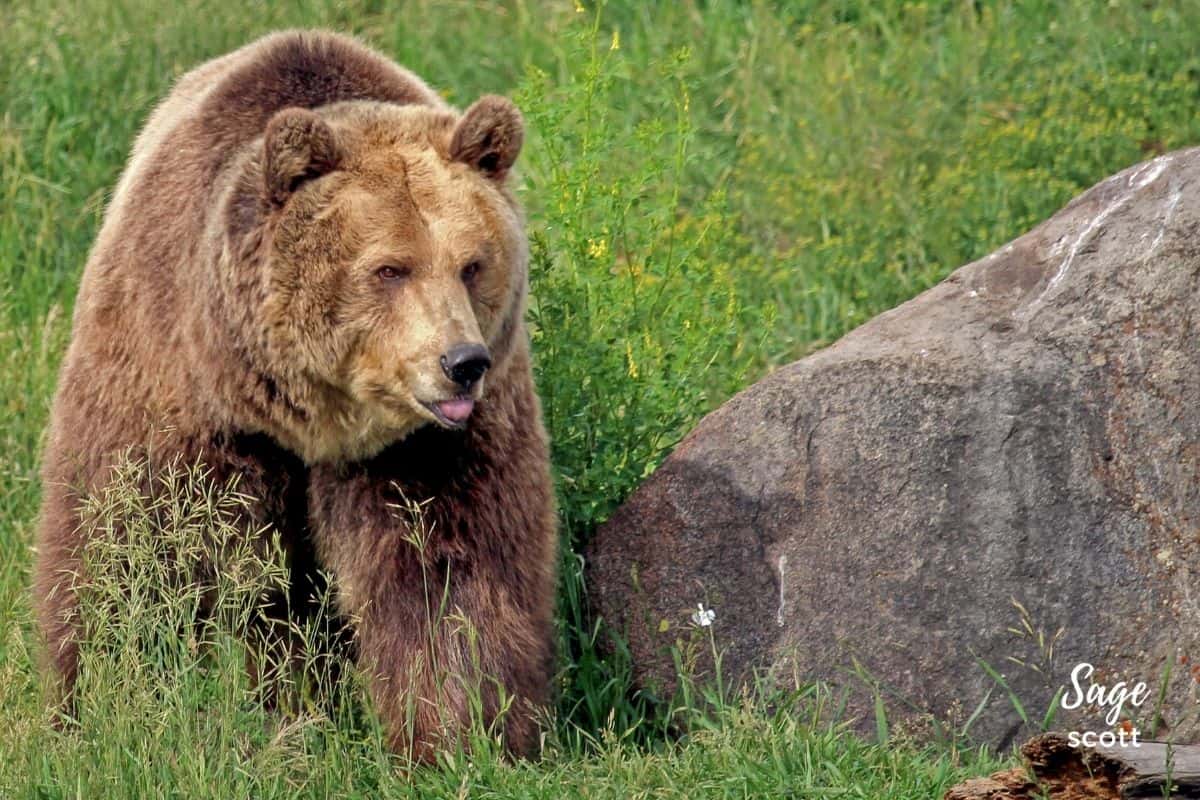


I hope I never have a run-in with a bear, but everyone should know these tips. I think so many people’s instinct would be to run, so it’s important to know that’s futile. Avoiding a second attack by staying laying down for a longer time is good to know too. I can’t believe they can smell animal carcasses from 20 miles away. Thanks for the useful information!
Yeah, if face-to-face with a bear, it would be REALLY hard to fight the instinct to run!
Oh these are some great tips for sure! I had gone to Glacier National Park, which is a bear county. The park is very beautiful in itself with amazing trails. But I remember we were so scared throughout the trails, we were ringing our bear bells constantly and talking with each other, walking in groups. It was a very different experience.
Glacier is gorgeous, but it’s definitely bear country! I loooooove your photos from Glacier, by the way!
We live in bear country (Rocky Mountains). We are always aware of our surroundings and make sure to tell the kids to stick close by us, too. Although we have seen many evidences of bears in our journeys, we’ve only seen one once. That was a grizzly at Yellowstone. Fortunately, we were a good distance from it so we got to watch it forage for food from a safe distance. Thank you once again for the tips and reminders. You can never have too much information.
This may not be entirely logical, but I always worry about bears a lot more the summers we go to Kalispell/Glacier than the summers we go to Bozeman/Yellowstone. In my mind (doesn’t mean it’s right), there seem to be sooooooooo many more people at Yellowstone (and the bears will naturally avoid them). And because of the visitors, the rangers seem to be very in tune to bear sightings and do their best to keep folks at a safe distance.
When we were RVing we spent 5 weeks in Yellowstone a few weeks in Grand Teton and a few weeks in Glacier, the experience taught us to be very bear aware! Thanks for the really great trips, we have some camping this fall in bear territory!
I was shocked to learn that cars and RVs are not bear-proof. Yowsa!
This is an excellent list. All hikers should be bear aware!
Very much so! It just takes turning a corner and startling a momma with a baby for the hiking trip to end badly!
Bears terrify me – we always had plans when we were out with the Boy Scouts but I always worried. Unfortunately this fear has stopped me from exploring some beautiful areas. Great tips though, that I hope I never have to use.
They’re an understandable creature to be afraid of, that’s for sure. Especially if you’ve ever witnessed (or truly considered) how fast they can run. I still recommend visiting a place like Yellowstone or Glacier in Montana where you have ample opportunity to see them at a distance with binoculars. Maybe that would help with your fear? (If not, I totally get it. I’m terrified of mice. LOL!)
I live in bear country and these are great tips! It amazes me how so many tourists forget that these are deadly, wild animals they are encountering!
I know, right? I find myself saying “Yellowstone National Park is not a petting zoo” more often than should be necessary each summer in Montana. 🙂
This is a good list. I am not confident I could remain calm. Your post makes me see how I can be prepared. I’m starting to enjoy hiking and hope to visit areas that could have bears.
We saw two grizzlies at Glacier National Park this past week. One was up on a bluff foraging, and the other was in a lush, wildflower-filled meadow doing the same. Park rangers were there to make sure humans didn’t behave badly, and it was so amazing to watch them enjoying life in their natural habitat through binoculars and a very long zoom lens. 🙂
Wow! In my area, I am way more concerned with scary insects! I know to run in a zig zag if an alligator is chasing me, but never knew to play dead for a bear! Definitely against my natural instincts, but good to know for when we have time to explore the West!
I did not know that about an alligator. Good to know since Louise and I are planning a trip to NOLA once it cools off! 🙂
Some really good tips! We had to be careful when we went out with the Boy Scouts and I’ve seen several friends post about encounters. Being prepared is key.
Yikes! Thankfully, the only encounter with a bear I’ve had is at bear Country in South Dakota! Great tips though!
Excellent tips. We camp from time to time in bear country, and I’m always amazed at how people tend to blow off bear safety. We have areas around here that REQUIRE bear barrels for food but people always seem to forget that means EVERYTHING has to go in them – including cosmetics, etc.